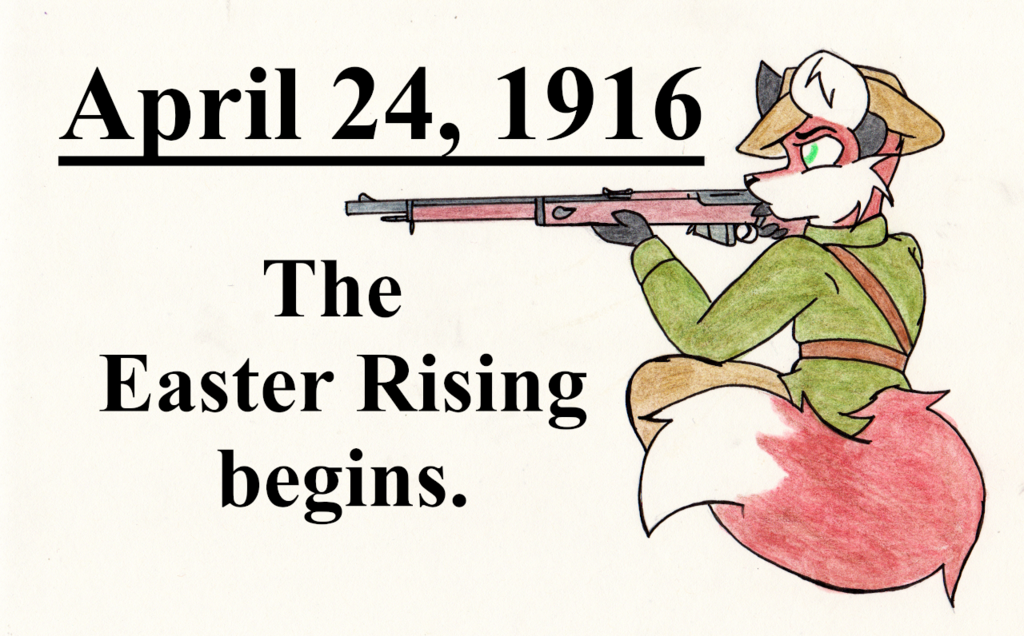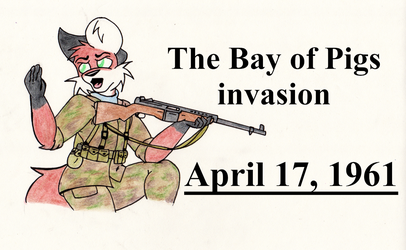Sign In
CloseOn April 24, 1916, the Easter Rising begins as Irish rebels seize strategic locations across Dublin. After the failure and postponement of multiple home rule bills, which would have allowed Ireland to rule itself as part of the United Kingdom, many came to believe that the only recourse was through direct action in the form of armed rebellion. Numbering ~1250 men and women in Dublin, the rebel forces consisted of elements from several Irish nationalist movements that sought to end British rule in Ireland and establish an independent Irish republic. As the Irish quickly moved to declare an Irish republic and secure a strong position in heart of Dublin, British troops were quickly mobilized to put down the rebellion and martial law was declared. 16,000 British troops and a further 1,000 men of the Royal Irish Constabulary (RIC) were rapidly deployed to Dublin. Fierce fighting would occur throughout the week as the Irish rebels largely armed with older British and German rifles and pistols tenaciously defended their positions from attacks by the much larger British forces equipped with rifles, machine guns, grenades, and artillery. However, the Irish position looked grim by the end of the week. Running out of supplies and fearing growing civilian casualties should they attempt to break out, the commander of the Irish forces ordered an unconditional surrender on April 29 with the last of the fighting in Dublin coming to an end the next day as word of the surrender spread to the remaining pockets of Irish resistance.
66 Irish rebels were killed in the fighting with an unknown number wounded. British casualties numbered 143 killed and 397 wounded. Furthermore, 260 civilians were killed in the fighting and over 2,200 wounded. In the wake of the Easter Rising, British authorities arrested 3,430 men and 79 women. 187 prisoners were tried in a courts-martial held in secrecy and without defense (an action later determined to have been illegal by the Crown) and with the presence of British officers who had led troops during the rebellion (leading to a conflict in interest during the trials). Ninety were sentenced to death, of which fifteen would be executed by firing squad between May 3 and May 12. As the executions continued, support for Irish independence grew alongside anti-British sentiment. Furthering this were atrocities perpetrated by British forces, including the Portobello killings (wherein a British officer ordered the execution of a pacifist nationalist leader, two journalists, and Labour Party official) and the North King Street Massacre (wherein British troops of the South Staffordshire Regiment entered houses on North Kings Street and executed 15 Irish civilians).
In 1922, Ireland was divided into two new states at the end of the Irish War of Independence. Northern Ireland was established in the north and remains part of the United Kingdom to this day. In the south, the Irish Free State was formed as a British dominion until 1937 when a new constitution creating a republican government was adopted. In 1949, the Republic of Ireland Act came into effect, removing the last British authority in the Republic of Ireland. However, tensions between supporters of an Irish republic and loyalists to the British Crown remained in Northern Ireland, manifesting in the period of armed conflict known as The Troubles, lasting from the 1960s until the Good Friday Agreement in 1998. A low-intensity conflict continues in Northern Ireland to this day.
Submission Information
- Views:
- 209
- Comments:
- 0
- Favorites:
- 3
- Rating:
- General
- Category:
- Visual / Traditional




